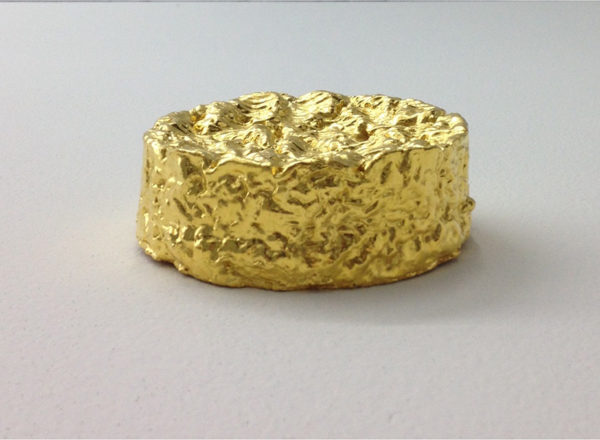Talk: Yum! The Lab’Bel Collection
As part of Lab’Food, Lab’Bel presented a selection of works from its collection through the lens of food.
As part of Lab’Food, Lab’Bel presented a selection of works from its collection through the lens of food.

Looking Back at the Talk: Yum! The Lab’Bel Collection
As part of Lab’Food, a programmatic series exploring the relationship between contemporary creation and food, the Lab’Bel team took on the challenge of presenting a selection of works from its collection through the lens of food.
In this talk hosted by Léo de Boisgisson, Laurent Fiévet and Silvia Guerra, director and artistic director of Lab’Bel, revisited the origins of the Laboratory, its mission and actions, before delving into the contours of the collection as an organic whole.
The Collection as an Organic Whole
Before discussing the artworks, we addressed some essential questions:
How does Lab’Bel, as an endowment fund linked to the Bel Group but operating independently, collect artworks?
How can a coherent body of work be built in the present moment of contemporary art?
What about the Laughing Cow as an iconographic legacy?
Is she a pop icon, akin to Andy Warhol’s Campbell’s Soup?
How does one navigate between this legacy and the assertion of an independent and sometimes offbeat artistic direction?
The Collection Through the Lens of Food
We then presented a selection of works that explore the theme of food through a diversity of forms, materials, and concepts. In some cases, artists use food as a living material to create mutable sculptures, as a counterpoint to the idea of the immovable, time-resistant artwork.
Such is the case with Michel Blazy, who transforms simple Krema candies into a marbled, precious-looking sculpture with Galet Mou, which nonetheless remains vulnerable to changes in its storage or display environment. Similarly, Nicolas Momein embarks on a unique and random collaboration with cows that “co-sign” salt stone sculptures with him (Incomplete Cube, Aliboron l’a digéré ¼), shaping them with every lick.
Other works offer contemporary nods to the genre of still life, like Still Life, One Egg by Ugo Rondinone, which plays with the simplicity and metaphysical symbolism of the egg, transforming this fragile object into a durable bronze sculpture; or Chou de Bruxelles (Sanda) by Jef Geys, which humorously represents the iconic Belgian vegetable by reusing the motif of a gardening seed packet.
Food and drink as containers can also serve as vehicles for subverting meaning, as in Inserções em circuitos ideológicos. Projeto Coca-Cola by Cildo Meireles, where Coca-Cola bottles—emblems of capitalism—are inscribed with political messages and reintroduced into the consumer chain, thus disrupting the dominant ideological communication channels.
In a more sculptural approach, Ruben Grilo draws from mass distribution forms with Chocolate Moulds, using molds made from chocolate bars to introduce an artisanal quality to products that originally stem from industry.
Food and advertising form part of the backdrop of daily life, a mutual penetration that Magnus Andersen explores in his Capricho series, where he mixes cat food ads with references to Goya, delving into the banality and sensory overstimulation characteristic of contemporary marketing.
Finally, the work of Nicolas Boulard—Colonne – Pouligny #1, Specific Cheese, Golden Cheese – Camembert, and Specific Slices—draws both from the living heritage of terroir and the history of art, playing on analogies between minimalist forms and cheese. With humor, he crosses these two traditions through détournement, formal appropriation, and genuine sculpture.
All these propositions take us far from the perfect, seductive images of food, in an age where the overabundance of images paradoxically distracts us from the reality of the food we consume and the systems involved in its production.
The full talk is available here: